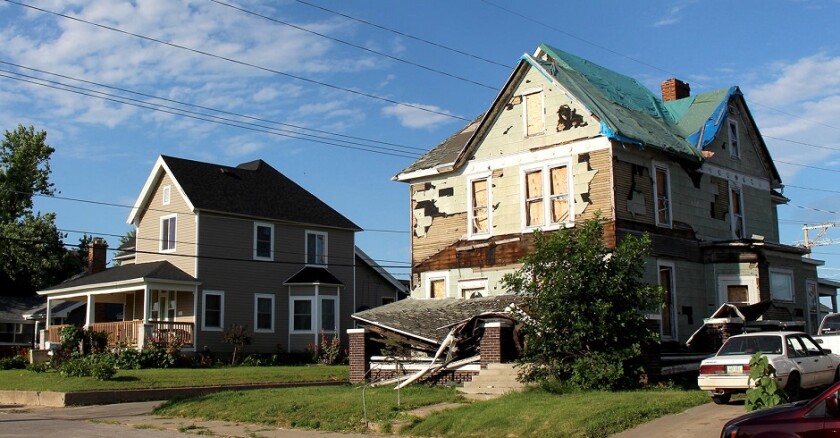That’s especially true of the low-income, migrant portion of the community where much of the tornado’s fury was unleashed. Housing there was tenuous even before the tornado, with multiple families living in single-family residences, some in desperate need of repair.
Two Iowa State University professors launched projects to shed light on disaster recovery and offer lessons learned for the future so communities can glean some knowledge to become more resilient. Both efforts look at the socioeconomic factors that exacerbate damage done after a disaster and stall recovery efforts.
Sara Hamideh, assistant professor of community and regional planning, used grant money to research the effects of the tornado on low-income, minority and immigrant residents.
Mimi Wagner, associate professor of landscape architecture and director of the sustainable environment program, is, along with her students, developing a Web-based tool kit to offer to communities in preparing for disasters before the recovery process.
Hamideh received grants from the Natural Hazards Center at the University of Colorado, Boulder, and from Iowa State’s Hazard Mitigation and Community Resilience Program. She surveyed 660 households to get an understanding of the vulnerability of families in lower-income areas to disaster.
She found many of the families still living in the dilapidated houses that were nearly uninhabitable before the tornado. With no insurance, no savings or means to rebuild, many residents have gone unlicensed, inexperienced contractors, working to rebuild.
“Our preliminary observations [the data hasn’t been fully analyzed] is that there were cases of people with no savings, no insurance, no resources and no alternative place to go, where people are becoming construction workers,” Hamideh said. “They are doing repairs little by little, sometimes in dangerous ways.”
Another commonality among the lower-income residents was that some were not homeowners or renters but lived in homes on a contract basis, where they paid the owner of the home with a stipulation of one day being able to purchase the home outright. Unfortunately, Hamideh said, the terms were very strict and missing payments can cause the inhabitant to lose what’s been paid and the right to live there.
Local leaders have deemed some of the properties uninhabitable and tagged them for demolition. That will leave empty lots next to some homes in need of repair next to homes that have been repaired.
The city is looking for ways to convert the vacant properties into parks or housing projects.
Wagner and colleagues and students set about developing a toolkit to inform future disaster survivors of the aforementioned hazards and how to become more resilient.
The toolkit will be based on what students learned during time on the ground in the community interviewing survivors of the tornado, their plight and needs.
“The goal is to product a toolkit to get information not necessarily to the community that just experienced the tornado but to communicate the trauma and extreme destruction of a tornado to communities and individuals that have experienced them,” Wagner said.
She said the students were shocked to learn of how much impact to the community that doesn’t get revealed and that the toolkit would be a tool to help them develop resilience.
One item completed that will be in the toolkit is a game based loosely on The Game of Life, where players go through a series of decisions that have to be made based on events that happen. It’s all based on a disaster and designed to help impart social resilience and the importance of having a strong social network prior to disaster.
The toolkit is expected to be completed this fall and links available to be housed on emergency management or similar websites.








